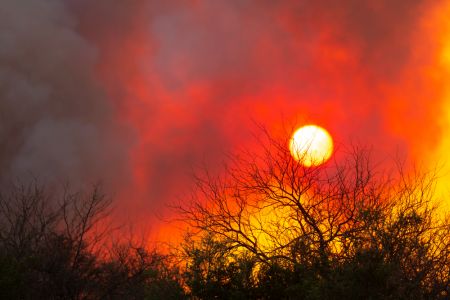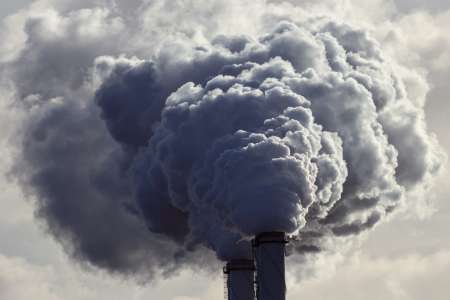Pantanal Wetlands Critical Carbon Sinks Are Being Destroyed
The Pantanal wetlands, the worlds largest and most important carbon sink, is being burned to make room for cattle and agricultural use.
11/14/2024

The Pantanal, a Biodiversity Haven and Climate Regulator
Tropical wetlands and floodplains are a planetary treasure; the largest, the Pantanal, is incredible. An ecosystem that is one of the most species-diverse places on the planet, the WorldAtlas reports that it “… is home to 9,000 invertebrate species, 159 mammal species, 53 types of amphibians, 480 reptile species, 400 fish species and some 1000 different types of birds.” Locally, it is also indispensable for regulating flooding in the rainy seasons.

The capybara (Hydrochoerus hydrochaeris), the world’s largest rodent, helps maintain the Pantanal’s ecosystem by grazing on grasses and aquatic plants. iStock.com/Tane-Mahuta
Tropical wetlands, such as the Pantanal, serve incredibly important roles in beauty, biodiversity, and flood control. Through carbon sequestration, they are also vitally important regulators of the earth’s climate. Wetlands, swamps, bogs, and permafrost areas are all carbon sinks that absorb CO2 and help control the global climate.
While tropical rainforests are often considered the most effective land areas for absorbing and storing carbon from the atmosphere, that is incorrect. The Pantanal and other wetlands are the winners, storing more carbon than they release, and no wetland is more significant than the Pantanal.
It’s Huge and It’s Being Burned
Spanning Brazil, Bolivia, and Paraguay, it is estimated to encompass 75,000 square miles, a land mass so large that Virginia and Indiana would fit within its borders. As would the entire country of Greece, which would fit into it with room to spare. UNESCO accurately describes the Pantanal as a natural heritage of humanity, writing:
The Pantanal Conservation Area consists of 187,818 ha of protected areas. Located in western central Brazil at the southwest corner of the State of Mato Grosso, the site represents 1.3% of Brazil’s Pantanal region, one of the world’s largest freshwater wetland ecosystems. The headwaters of the region’s two major river systems, the Cuiabá and the Paraguay rivers, are located here, and the abundance and diversity of its vegetation and animal life are spectacular.
The description is available under license CC-BY-SA IGO 3.0
Tragically, the Pantanal is being purposely slashed and burned, chiefly for cattle ranching and agricultural development, leaving it severely damaged and destroyed. Additional destruction comes from cumulative changes to the earth’s climate, creating hotter and drier conditions. As a result, manmade and naturally occurring fires have become more intense and frequent, generating in conflagrations that strip the land of almost everything living.
Forest fires are common in nature. In temperate climate fires, animals can seek shelter under the surface. This is impossible in tropical wetlands where the land is too wet or the fires spread beneath the surface. Large animals, such as jaguars, jabiru storks, and capybaras, cannot find shelter and painfully perish, as do millions of smaller creatures and plants that face death and extinction.
Mass Destruction of the Pantanal Drives Climate Change
Deprived of the carbon buffering effects of tropical wetlands, carbon dioxide in the atmosphere as high as it is today hasn’t been seen for over 800,000 years. Intensely disturbing are the recently rising temperatures as seen on climate.gov:

Preliminary results from a Smithsonian Institution project led by Scott Wing and Brian Huber show Earth’s average surface temperature over the past 500 million years. Most of the time, global temperatures appear to have been too warm (red portions of line) for persistent polar ice caps. The most recent 50 million years are an exception. Image adapted from Smithsonian National Museum of Natural History.
What’s not so noticeable, but worse, is shown in the blue section on the right side of the graph. This section represents tens of millions of years, and within this period are the times when mankind has existed. Humans lived in no other period except when colder temperatures were prevalent. Human life will be threatened if global temperatures continue to soar and cross into red zones.
If it is a given that the climate will naturally warm at some point, maybe we are in such a period of this happening. Is our best plan to assist in this warming adding to the problem by increasing the amounts of greenhouse gasses venting into a naturally warming atmosphere? Which is exactly what we are currently doing.
Tropical wetlands and other sinks, such as peat bogs, swamps, marshes, floodplains, rainforests, and permafrost areas, are all viable and important natural ways to limit climate change. They are part of the solution, yet even as our actions contribute to climate change, we destroy them.

Wetlands are life sources for jaguars, offering vital food and shelter. Their destruction endangers jaguars and weakens entire ecosystems. Large male jaguar (Panthera onca). iStock.com/RollingEarth
Targeted Ways to Help
Limiting our emissions and preserving processes and areas, such as wetlands, that mitigate the effects of climate change are essential solutions for global climate change.
Things we all can do to help save these critically important areas:
- Contact your elected representatives and ask that trade agreements have provisions for safeguarding the Pantanal and other critical environmental areas;
- Let the corporate sites and stores where you make purchases know you are concerned about the damage to our planet and will look for beef and other products that are sustainably produced without endangering the climate;
- Cut back on consuming beef and other products contributing to global climate change. Eating less of these products is also good for your health. A win, win.
- Support organizations that help preserve environmentally sensitive areas:




















